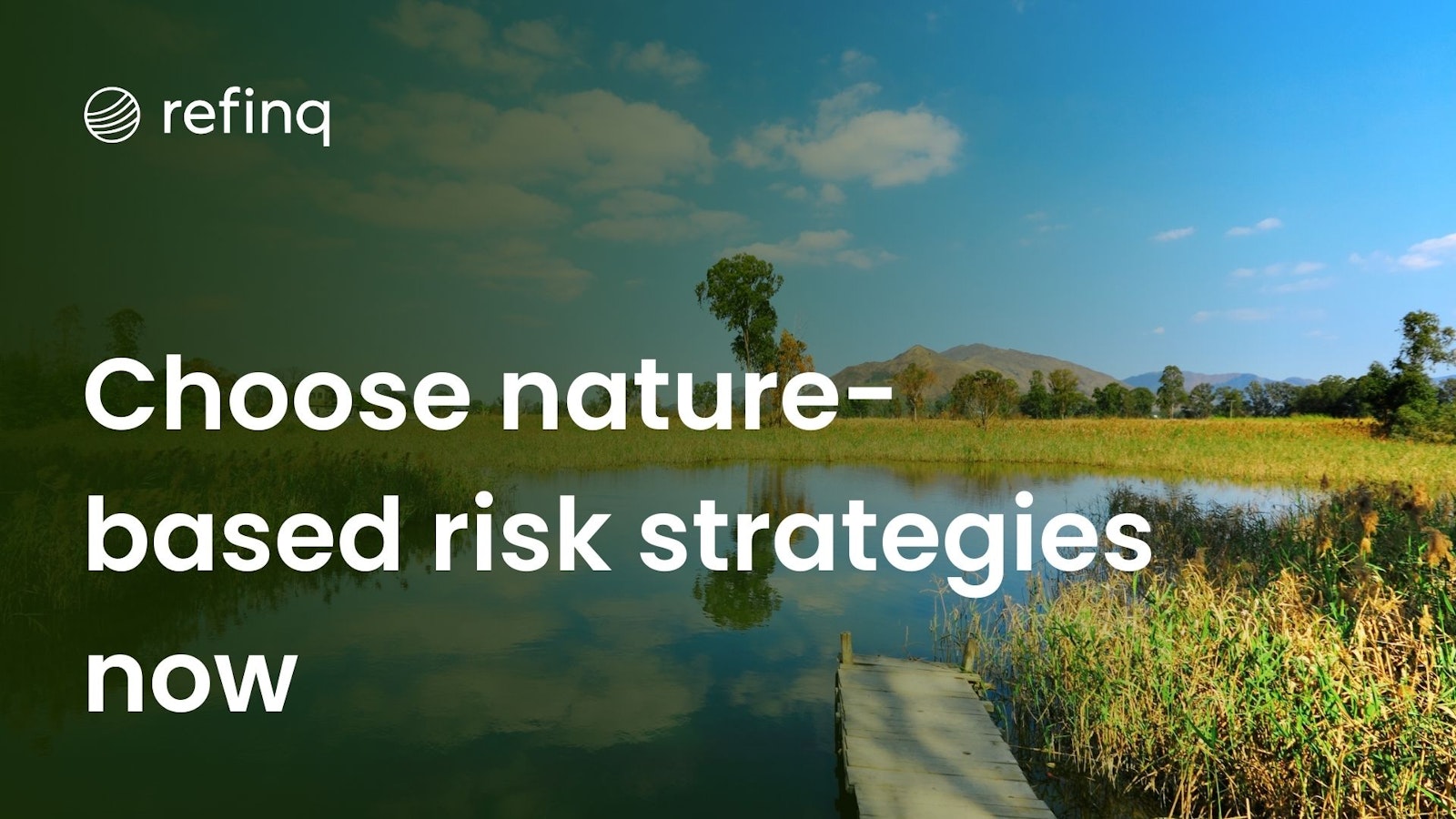

Traditional risk mitigation strategies often rely on engineered solutions such as sea walls, levees, and other infrastructure to protect against natural hazards. While these methods can provide immediate protection, they may lack the sustainability and adaptability needed in the face of evolving climate conditions. On the other hand, nature-based solutions leverage natural processes and ecosystems to reduce risks, offering a more holistic and resilient approach. To delve deeper into how these strategies compare and how innovative platforms like Refinq's climate solutions can enhance your risk management practices, read on.
Nature-based solutions encompass a wide range of strategies that utilize natural systems to address environmental challenges. These include restoring wetlands to mitigate flood risks, planting trees to prevent soil erosion, and conserving mangroves to protect coastal areas from storm surges. By working with nature, these solutions not only reduce risks but also provide additional benefits such as biodiversity enhancement and carbon sequestration.
For organizations looking to implement NbS, Refinq's biodiversity solutions provide comprehensive assessments to identify and manage biodiversity risks effectively.
Traditional risk mitigation relies heavily on engineered solutions to protect assets and communities from natural hazards. Examples include constructing flood barriers, earthquake-resistant buildings, and drought-resistant irrigation systems. While these methods can offer robust protection, they often require significant financial investment and may not adapt well to changing environmental conditions.
Integrating platforms like Refinq's portfolio impact assessment can help businesses evaluate the effectiveness of their traditional risk mitigation strategies and explore more sustainable alternatives.
When evaluating the effectiveness of nature-based solutions against traditional strategies, several factors come into play:
Nature-based solutions tend to be more adaptable to changing conditions. For instance, restoring wetlands can evolve naturally to handle varying flood levels, whereas static infrastructure like levees may require frequent upgrades to remain effective.
NbS generally have a lower environmental footprint, promoting biodiversity and ecosystem health. Traditional methods, while effective in immediate risk reduction, can sometimes lead to habitat destruction and reduced ecological resilience.
While both approaches require investment, NbS often offer more cost-effective solutions in the long run due to lower maintenance costs and the added benefits of ecosystem services.
For a detailed analysis of the cost-effectiveness of NbS, refer to the Nature-Based Solutions Initiative.
The integration of nature-based solutions with advanced technology can significantly enhance their effectiveness. Platforms like Refinq utilize machine learning and geospatial analysis to provide real-time risk evaluations and forecasts. This technological synergy allows businesses to implement NbS with precision, ensuring that their strategies are both effective and sustainable.
Refinq's due diligence solutions enable enterprises to conduct thorough environmental risk assessments, ensuring that their NbS implementations are based on accurate and comprehensive data. By processing over 2.5 billion data points, Refinq offers detailed insights that help in crafting robust risk management strategies.
With access to real-time data and predictive analytics, businesses can make informed decisions about where and how to implement NbS. Refinq's benchmarking tools allow organizations to compare their risk mitigation efforts against industry standards, ensuring continuous improvement and adaptation.
Different industries can leverage nature-based solutions in unique ways to mitigate risks. For example:
These applications demonstrate the versatility of NbS and their ability to provide tailored solutions across various sectors.
Modern technology plays a crucial role in optimizing the implementation of nature-based solutions. Platforms like Refinq leverage advanced data analytics to monitor and manage environmental risks effectively.
Refinq's climate solutions provide real-time monitoring of environmental conditions, enabling businesses to anticipate and respond to risks proactively. This capability is essential for maintaining the effectiveness of NbS over time.
By integrating vast amounts of data from various sources, Refinq creates detailed risk profiles that inform the design and implementation of NbS. This data-driven approach ensures that solutions are tailored to the specific needs and conditions of each location.
While nature-based solutions offer numerous benefits, their implementation comes with challenges:
Platforms like Refinq address these challenges by providing comprehensive tools for monitoring, evaluating, and managing NbS, ensuring their long-term success and sustainability.
Nature-based solutions present a viable and sustainable alternative to traditional risk mitigation strategies, offering enhanced resilience, cost-effectiveness, and environmental benefits. By leveraging advanced technologies and comprehensive data analysis, platforms like Refinq empower businesses to implement effective NbS that not only mitigate risks but also contribute to broader environmental and social goals.
As the global community continues to grapple with the impacts of climate change, integrating NbS into risk management frameworks will be crucial for building resilient and sustainable futures. Refine your approach with Refing’s innovative solutions, ensuring that your strategies are both effective and aligned with the latest environmental standards.